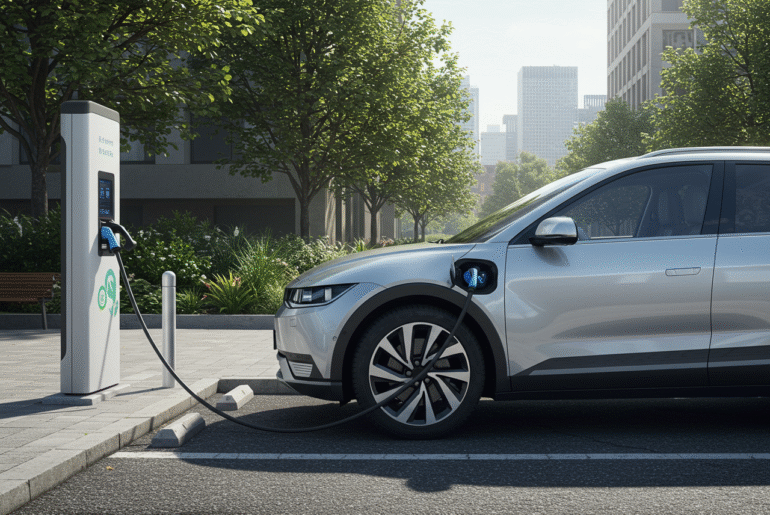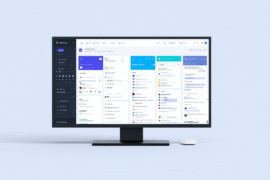This article may contain references to products or services from one or more of our advertisers or partners. We may receive compensation when you click on links to those products or services. Nonetheless, our opinions are our own.
The information presented in this article is accurate to the best of our knowledge at the time of publication. However, information is subject to change, and no guarantees are made about the continued accuracy or completeness of this content after its publication date.
- Norway’s Electric Vehicle Revolution in 2025
- How Norway Made Electric Vehicles the Top Choice
- Top-Selling Electric Vehicles in Norway in 2025
- Broader Impact of Norway’s EV Shift
- Lessons for the World from Norway’s Experience
- Why Norway’s EV Story Matters Globally
- Final Thoughts
- Frequently Asked Questions
- Recommended Reads
Norway’s Electric Vehicle Revolution in 2025
In 2025, Norway reached a remarkable milestone as 97% of all new cars sold were fully electric vehicles (BEVs). When including plug-in hybrids, that number rose to 98.6% just in January. From 89% in 2023, Norway is now on track to ban new gas-powered vehicle sales by the end of 2025, well ahead of most countries. This transformation is a result of effective policies, infrastructure, and culture. The following sections explain how Norway achieved this EV dominance and what lessons other nations can apply to their own transportation systems.
How Norway Made Electric Vehicles the Top Choice
Incentives That Encourage Buyers
Norway made electric vehicles the clear and attractive choice by removing financial barriers. The government eliminated VAT and import taxes on EVs and waived tolls, ferry fees, and city parking charges in many areas. EV drivers enjoy bus lane access to bypass traffic jams, lower road taxes, and exclusive local benefits. These incentives have been consistently available for over a decade, providing buyers with long-term confidence. Strong advocacy from organizations like Elbilforeningen (The Norwegian EV Association) also helped shape these rewarding policies.
A Reliable Charging Network
Charging infrastructure is a critical factor in EV adoption. Norway has built a robust network with over 9,700 fast chargers at more than 1,700 locations nationwide. This amounts to 174 fast chargers per 100,000 people—nearly 16 times more than some U.S. states. By 2024, there were more than 27,000 public chargers, and expansion continues to include heavy-duty charging for trucks and commercial fleets. The private sector developed much of this infrastructure, with government support facilitating growth, especially in rural areas.
Why Norwegians Choose EVs
Besides financial incentives, cultural values play a major role in EV adoption. Sustainability is a strong national value in Norway, supported by a nearly 100% hydro-powered electric grid that ensures clean charging. Drivers benefit from lower long-term maintenance and fuel costs. EVs perform well in both urban and rural settings. Even in Finnmark, Norway’s northernmost and coldest region, 74% of new car buyers chose EVs in 2024, proving these vehicles can handle extreme conditions.
Top-Selling Electric Vehicles in Norway in 2025
Norwegian drivers have diverse EV options, but some models dominate the market. The Tesla Model Y remains the leader with 27% of new sales as of June 2025. Other popular models include the Toyota bZ4X, Volkswagen ID.4, Tesla Model 3, BYD Sealion, Volkswagen ID.3, and Volvo EX30. Tesla’s continued dominance is challenged by growing trust in brands like Toyota, Volkswagen, BYD, and Volvo, which offer more affordable alternatives.
Voted "Best Overall Budgeting App" by Forbes and WSJ
Monarch Money helps you budget, track spending, set goals, and plan your financial future—all in one app.
Get 50% OFF your first year with code MONARCHVIP
Broader Impact of Norway’s EV Shift
Norway’s EV transition extends beyond passenger cars. Public buses and delivery trucks are increasingly electric, contributing to cleaner cities. Battery storage systems support the grid by feeding clean power back. EV ferries are being introduced on coastal routes, and battery recycling programs are gaining momentum. This comprehensive approach enhances air quality and energy efficiency nationwide.
Lessons for the World from Norway’s Experience
Norway’s EV success provides valuable insights for policymakers and businesses worldwide. Long-term, stable incentives build buyer trust and encourage adoption. A dependable and convenient charging network reduces barriers. Public pressure and advocacy groups maintain momentum for supportive policies. A culture that embraces sustainability accelerates acceptance rather than forcing change. These factors together create an environment where EV adoption can thrive.
Why Norway’s EV Story Matters Globally
The rise of EVs in Norway signals what is possible in other markets. Electric vehicles are becoming cheaper to own than gasoline cars in many places. Green financing options and subscription models make EV ownership more accessible. Trucks, buses, and fleets are going electric, cleaning urban air worldwide. Advances in battery technology and recycling continue to improve the sustainability of EVs. Whether a driver, policymaker, or investor, Norway’s experience offers a preview of the electric future.
Final Thoughts
Norway’s rapid shift to electric vehicles demonstrates how consistent policy, infrastructure development, and cultural values combine to reshape transportation. The country’s example shows that with stable incentives and a reliable charging network, electric vehicle adoption can accelerate quickly and sustainably. Norway’s experience offers a blueprint for other nations seeking to reduce emissions and modernize their vehicle fleets. As EV technology and support systems improve worldwide, Norway’s model highlights the importance of long-term commitment to achieve a cleaner, greener future.
Frequently Asked Questions
Who leads the world in ev adoption?
Norway is the global leader in EV adoption, with 97% of new car sales in 2025 being fully electric vehicles. This high adoption rate reflects strong government incentives, infrastructure, and cultural acceptance.
What made norway’s ev transformation possible?
The transformation was enabled by smart, stable policies, including tax exemptions, toll waivers, free parking, and consistent advocacy by groups like Elbilforeningen. These measures removed financial and practical barriers for buyers.
Is charging easy and convenient in norway?
Yes. Norway has over 27,000 public chargers, including more than 9,700 fast chargers nationwide. This extensive network ensures convenient access to charging stations even in rural areas.
Which electric vehicles are most popular in norway?
The Tesla Model Y leads in popularity, followed by the Toyota bZ4X, Volkswagen ID.4, Tesla Model 3, BYD Sealion, Volkswagen ID.3, and Volvo EX30. These models offer a mix of performance, affordability, and brand trust.
Are there any challenges with ev adoption in norway?
Challenges remain, such as reduced battery range in cold weather, the need for more chargers in remote areas, and scaling battery recycling programs. However, ongoing investments aim to address these issues.

Reviewed and edited by Albert Fang.
See a typo or want to suggest an edit/revision to the content? Use the contact us form to provide feedback.
At FangWallet, we value editorial integrity and open collaboration in curating quality content for readers to enjoy. Much appreciated for the assist.
Did you like our article and find it insightful? We encourage sharing the article link with family and friends to benefit as well - better yet, sharing on social media. Thank you for the support! 🍉
Article Title: Norway’s 2025 EV Revolution Explained
https://fangwallet.com/2025/08/09/norways-2025-ev-revolution-explained/The FangWallet Promise
FangWallet is an editorially independent resource - founded on breaking down challenging financial concepts for anyone to understand since 2014. While we adhere to editorial integrity, note that this post may contain references to products from our partners.
The FangWallet promise is always to have your best interest in mind and be transparent and honest about the financial picture.
Become an Insider

Subscribe to get a free daily budget planner printable to help get your money on track!
Make passive money the right way. No spam.
Editorial Disclaimer: The editorial content on this page is not provided by any of the companies mentioned. The opinions expressed here are the author's alone.
The content of this website is for informational purposes only and does not represent investment advice, or an offer or solicitation to buy or sell any security, investment, or product. Investors are encouraged to do their own due diligence, and, if necessary, consult professional advising before making any investment decisions. Investing involves a high degree of risk, and financial losses may occur including the potential loss of principal.
Source Citation References:
+ Inspo
There are no additional citations or references to note for this article at this time.











































